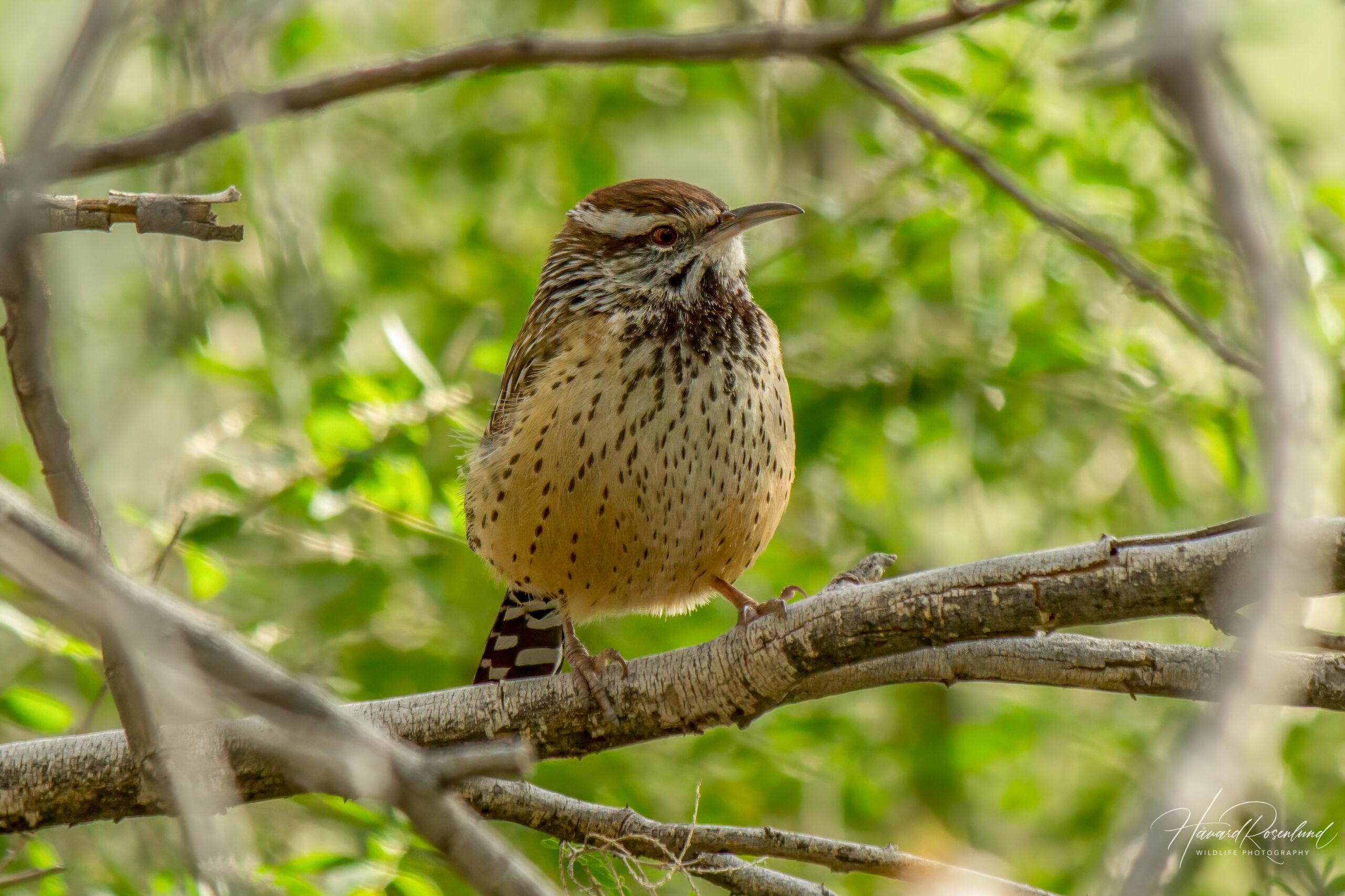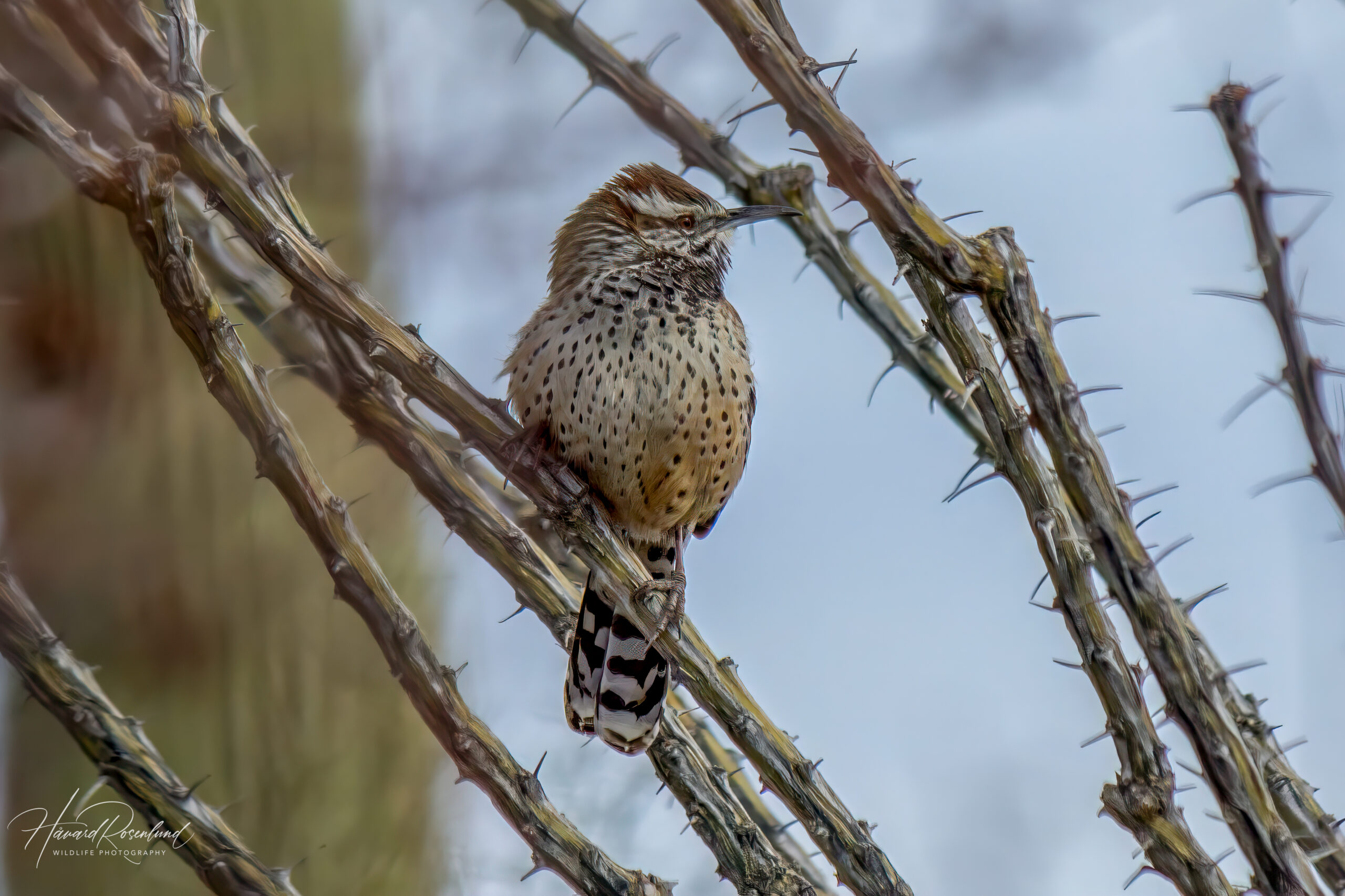Description
The cactus wren (Campylorhynchus brunneicapillus) is the largest North American wren, measuring about 18-22 cm (7-8.5 inches) in length. It has a white belly, speckled with black, and a brown back with black and white streaks, making it stand out in its arid habitat. Its tail is long and rounded with black bars. One of its unique features is its loud and distinctive call, often described as a harsh “churr.” The cactus wren’s range extends through the deserts of the southwestern United States and central Mexico. The cactus wren can be easily distinguished from other wren species by its larger size, more prominently barred tail, and the white stripe over its eye.
Diet & habitat
Cactus wrens primarily inhabit arid and semi-arid regions, including deserts with scattered brush and cactus, particularly favoring areas with cholla cacti. They are well-adapted to dry environments and are often found in scrubby areas and desert edges. Their diet mainly consists of insects such as ants, beetles, grasshoppers, and spiders, along with some seeds and fruits. They forage on the ground or in vegetation, using their curved bills to probe for food in crevices of cacti and bark. These wrens rarely drink water, obtaining most of their moisture from food. They are known for their curious nature and can be quite bold around humans.
Nesting
The breeding season for cactus wrens typically begins in late winter and continues into summer, peaking in spring. They are monogamous birds, and pairs often stay together throughout the year. The male initiates courtship by offering food to the female and performing a display that includes wing-drooping and tail-fanning. Their nests, distinctive for their dome shape with a side entrance, are made of grass and twigs and lined with feathers. These nests are often built in cacti or thorny bushes. They often have several nests within their territory, using some for breeding and others for shelter. A typical clutch consists of 3-6 eggs, which are incubated primarily by the female for about 16 days. The chicks are fledge in about 19-23 days.
Status
The cactus wren population appears stable, and it benefits from some human activities that create suitable habitat. It is classified as least concern on the IUCN Red List.






